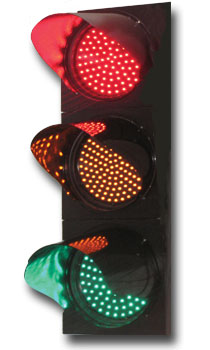The county is joining a growing list of local governments switching out incandescent bulbs for light-emitting diodes, or LEDs, embarking on a $1 million effort to begin replacing the bulbs at the 880 intersections it maintains.
LEDs cost $60 each while incandescents run $4, but the average intersection with incandescent traffic signals costs county taxpayers $2,380 a year in electric bills, said John Blount, the county’s director of architecture and engineering. A test intersection the county converted to LED last year showed a projected annual cost of just $328.
Arguably more important, Blount said, is that LEDs last seven or eight years, rather than 12 to 18 months, thus cutting the $1,500 it costs every time a contractor must be sent out to replace bulbs.
“You get a lot of savings on the cost of installation,” he said. “Instead of going every year and replacing them, in essence, you’re going every eight years. Just like homeowners, we have to constantly look at ways to save energy.”
This is a total no-brainer. They’ll recoup the costs quickly in lower electric bills, and they’ll save in the long term by having to replace the LED bulbs far less often. The main thing about the LED signals that I have found to dislike is that the green light is often not visible from a medium distance, I suspect due to the viewing angle. I have not seen the same issue with the yellow or red lights, so at least I know when I approach the intersection that what I can’t see I don’t need to stop for. Am I the only one that has noticed this?
The city of Houston in 2007 began a $1 million effort to replace 300 traffic signals with LEDs downtown, in Midtown and near the Texas Medical Center, Public Works Department spokesman Gary Norman said. That program expanded into a $16 million, 1,700-signal project citywide; today, Norman said just 398 signals remain to be converted. The city has received a grant to help complete the work, he said, which will begin this spring and take about a year.
The spread of LED traffic signals began a decade ago, but sped up in 2006, when the Department of Energy mandated that new or replaced signal systems meet more stringent energy requirements, said Siva Narla, senior director of transportation technology at the Institute of Transportation Engineers.
ITE’s position, Narla said, is that “these are beneficial, these are more energy-efficient and, as a community, LEDs are the way to go.”
Indeed they are. And now I’m wondering when we’ll do the same for all those incandescent street lights.

